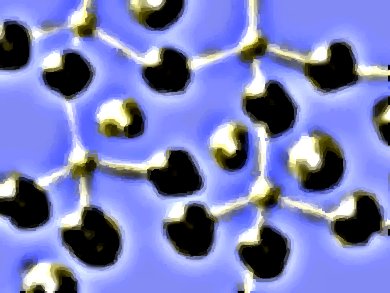The solidification of glass occurs without any significant change in structure. Under the microscope it appears as if glass keeps flowing even in the solid state, although extremely slowly.
Patrick Royall and Karoline Wiesner, University of Bristol, UK, and Ryoichi Yamamoto, Kyoto University, Japan, have combined computer simulation and information theory, originally invented for telephone communication and cryptography, to answer the question of what happens with glass at very low temperature, and whether the whole material becomes truly solid.
The researchers discovered that the size of the solid-like regions of the material increases over time until eventually there would be no more liquid regions. So glass should be a true solid. They also found that atoms in the solid-like regions organize into geometrical shapes, such as icosahedra.
Such icosahedral configurations were predicted in 1952 by Sir Charles Frank, University of Bristol, UK.
- Mutual information reveals multiple structural relaxation mechanisms in a model glass former,
Andrew J. Dunleavy, Karoline Wiesner, Ryoichi Yamamoto, C. Patrick Royall,
Nat. Commun. 2015, 6, 6089.
DOI: 10.1038/ncomms7089




